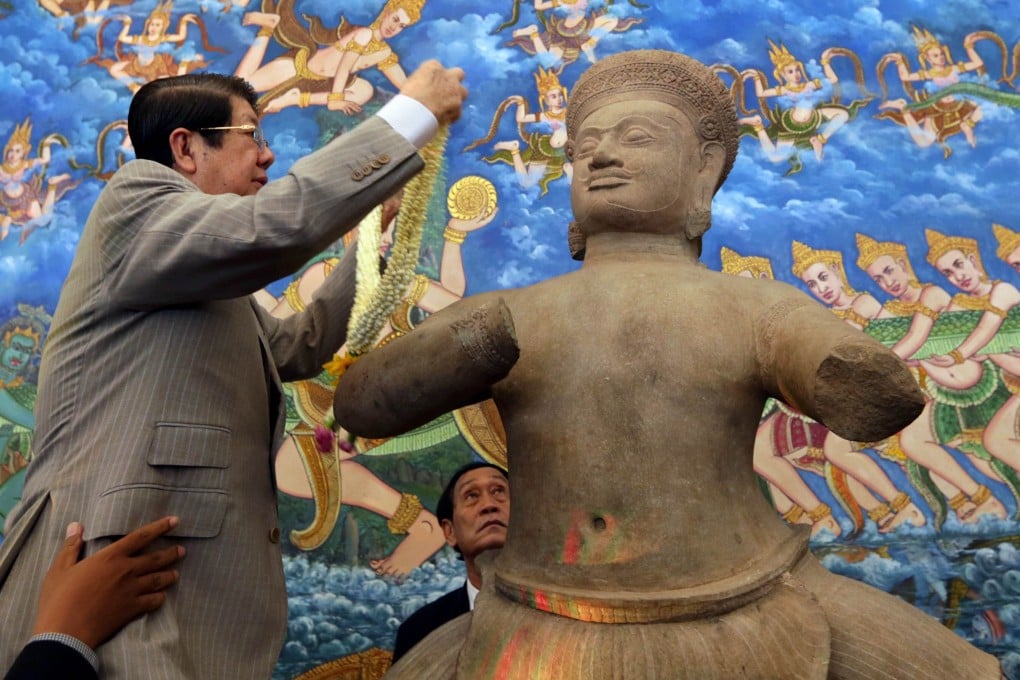Advertisement
Cambodia to get back artefacts lost during Khmer Rouge regime from late British collector Douglas Latchford’s daughter
- The antiquities were taken during the Khmer Rouge regime and are being returned by the daughter of controversial art collector Douglas Latchford
- But scores of items were also removed during French colonial rule, and with many sites undiscovered or improperly documented, there is much work to be done
Reading Time:3 minutes
Why you can trust SCMP
0

Cambodia’s efforts to reclaim artefacts taken during the genocidal Khmer Rouge regime in the 1970s and smuggled through neighbouring Thailand received a boost when the daughter of a controversial late British art collector last month announced she would return more than 100 items worth over US$50 million.
The Ministry of Culture and Fine Arts on January 29 said Douglas Latchford’s collection constituted “one of the greatest collections of Khmer cultural heritage outside of Cambodia” and their return was “an incredible event for the Cambodian people and the world”.
Latchford, who died last year aged 88, was in 2019 charged by federal prosecutors in the United States for making false documents to transport ancient Khmer valuables around the world.
The items, joining others that have been returned by foreigners in previous years, demonstrate the Herculean task faced by the Cambodian government and its supporters in restoring and preserving the country’s history.
Reaksmey Yean, a Cambodian art advocate and programme director of the Silapak Trotchaek Pneik art gallery in the capital, Phnom Penh, said the Cambodian people believed these artefacts were their souls and identity.
Advertisement